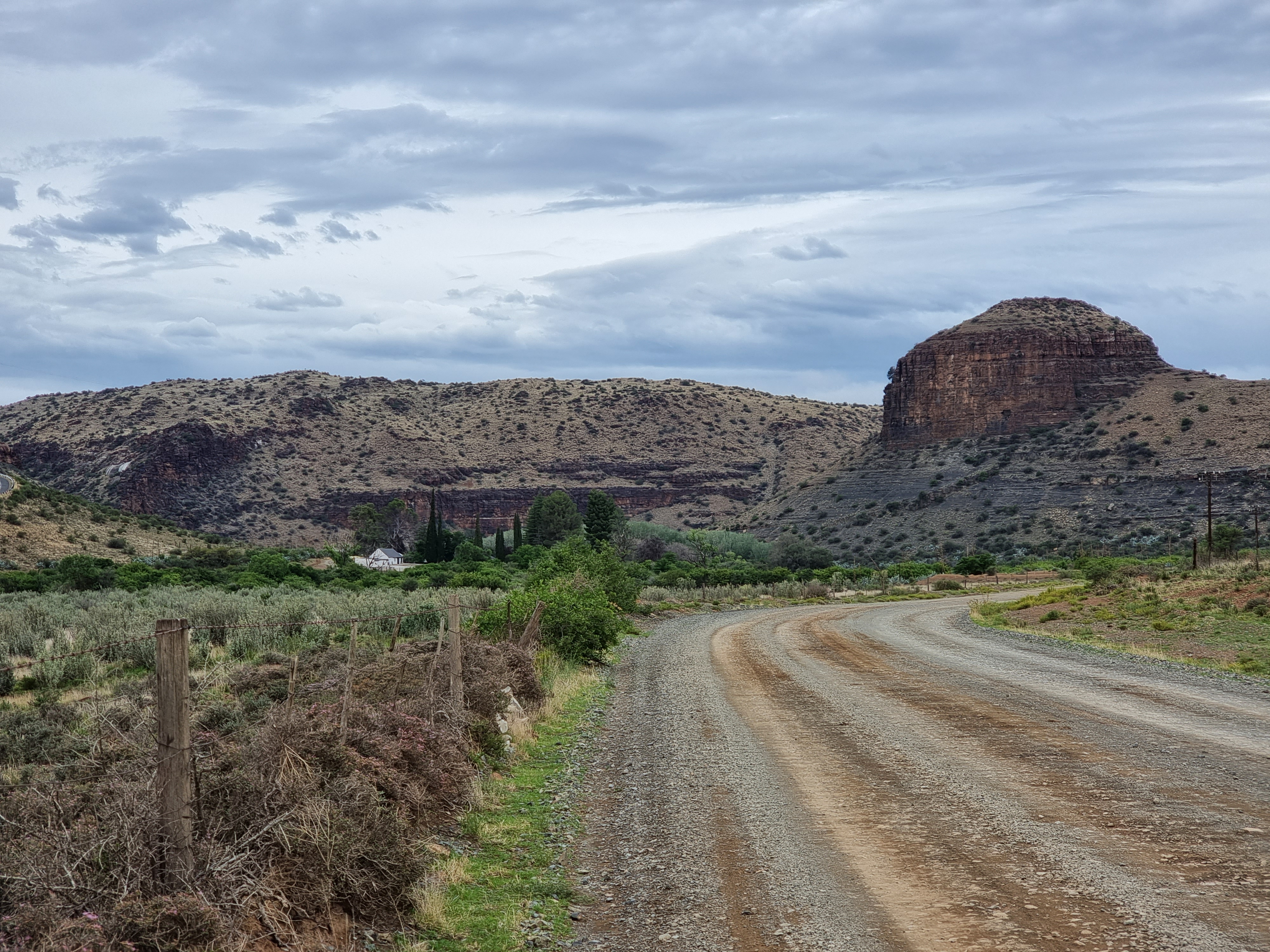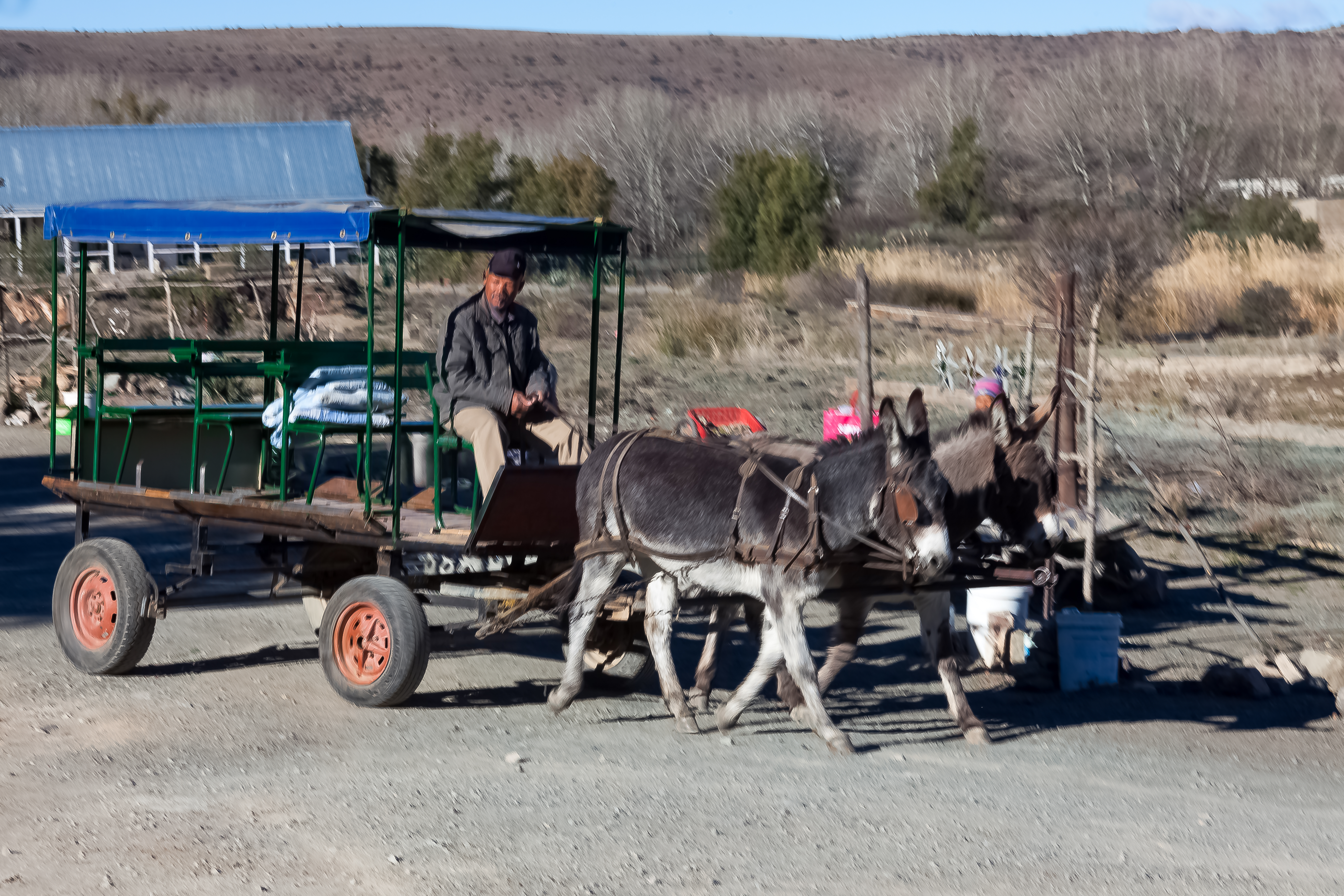Nieu-Bethesda on:
[Wikipedia]
[Google]
[Amazon]
Nieu-Bethesda (

 The town of Nieu Bethesda has about 1540 residents. The town is still racially divided with the African (25.06%) residents staying mostly in the Kloofroad area of Pienaarsig. The Coloured (65.19% of the town population) and Black African (22% of the population) residents abide in Pienaarsig, the former township and the White residents (8.70% of the town population) stay along the banks of the Gats River that runs through the town. Nieu Bethesda is surrounded by 8 commercial farms which provide employment for locals. There are also tourism projects such as Kitching Fossil Exploration Centre, Bethesda Arts Centre and The Owl House which generate income for the town. There are no ATMs in Nieu Bethesda and the town relies on Graaff Reinet for banking services. There is one school known as the Lettie de Klerk Primary School in Pienaarsig. For health services, Nieu Bethesda has one clinic and a resident sister.
The town of Nieu Bethesda has about 1540 residents. The town is still racially divided with the African (25.06%) residents staying mostly in the Kloofroad area of Pienaarsig. The Coloured (65.19% of the town population) and Black African (22% of the population) residents abide in Pienaarsig, the former township and the White residents (8.70% of the town population) stay along the banks of the Gats River that runs through the town. Nieu Bethesda is surrounded by 8 commercial farms which provide employment for locals. There are also tourism projects such as Kitching Fossil Exploration Centre, Bethesda Arts Centre and The Owl House which generate income for the town. There are no ATMs in Nieu Bethesda and the town relies on Graaff Reinet for banking services. There is one school known as the Lettie de Klerk Primary School in Pienaarsig. For health services, Nieu Bethesda has one clinic and a resident sister.
Owl House
Populated places in the Dr Beyers Naudé Local Municipality Populated places established in 1875 Karoo {{EasternCape-geo-stub
Afrikaans
Afrikaans (, ) is a West Germanic language that evolved in the Dutch Cape Colony from the Dutch vernacular of Holland proper (i.e., the Hollandic dialect) used by Dutch, French, and German settlers and their enslaved people. Afrikaans gra ...
for ''New Bethesda'') is a village in the Eastern Cape at the foot of the Sneeuberge
The Sneeuberge or Sneeuberg mountain range was historically known as “Sneeuwbergen”, meaning ‘snow mountains’ in Cape Dutch, and refers to a significant portion of Southern Africa's Great Escarpment in the Cradock, Murraysburg, Richmo ...
, approximately north of Graaff Reinet
Graaff-Reinet is a town in the Eastern Cape Province of South Africa. It is the oldest town in the province. It is also the sixth-oldest town in South Africa, after Cape Town, Stellenbosch, Simon's Town, Paarl and Swellendam. The town was t ...
. It was founded in 1875 as a church town, like many other Karoo villages, and attained municipal status in 1886. The name is of biblical origin () and means "place of flowing water".
History
Nieu Bethesda is situated on the farm, Uitkyk, which belonged to BJ Pienaar. There was a very strong water supply on the farm and BJ Pienaar changed the course of the Gats River to drain the marshes and turn the area into fertile fields – where Nieu Bethesda stands today. On 15 December 1874, the farmers of this area met for the first time with a view to establishing a village and Dutch Reformed Church congregation. A town council was elected. In February 1875, a petition group of 169 men met the church council of Graaff-Reinet, headed by the Reverend Charles Murray, son of the first preacher Andrew Murray. On the same day, negotiations were concluded to buy Uitkyk from Pienaar's sons. It was not until 1878 thatGraaff-Reinet
Graaff-Reinet is a town in the Eastern Cape Province of South Africa. It is the oldest town in the province. It is also the sixth-oldest town in South Africa, after Cape Town, Stellenbosch, Simon's Town, Paarl and Swellendam. The town was the ...
agreed to the petitions of the Nieu Bethesda people. Rev. Charles Murray named the new settlement Nieu Bethesda in reference to the strong fountain and its biblical reference. In 1880, the church struggled to run the village so, in 1886, it became a municipality, but with administrative rights only. The church retained the properties. This meant that residents had to pay two taxes, an arrangement that led to friction for many generations. The town experienced a period of growth from its establishment in 1870s to about 1930. Nieu-Bethesda was eclipsed by larger towns during the 1930s and ‘40s. The Great Depression, improved transport and the town's isolated location led to a mass exodus, leaving the town in an impoverished state.
The town of Nieu Bethesda carries a peculiar history and has therefore become a tourist attraction. The Dutch Reformed Church
The Dutch Reformed Church (, abbreviated NHK) was the largest Christian denomination in the Netherlands from the onset of the Protestant Reformation in the 16th century until 1930. It was the original denomination of the Dutch Royal Family and ...
which was founded in 1875 in the area began holding its services in BJ Pienaar's wagon house. A new church building was inaugurated in 1905. The Wagon House (now known as the Old Church Hall) was then used as a church hall and a venue for English church services.
In the 1930s, a Nieu Bethesda-born teacher known as Helen Martins returned to the town. After her father's death in 1945, Martins began transforming her home into a work of art. She employed Koos Malgas, a Nieu Bethesda local to assist her with her artwork. She and Malgas constructed cement and glass statues inspired by biblical texts, the poetry of Omar Khayyam
Ghiyāth al-Dīn Abū al-Fatḥ ʿUmar ibn Ibrāhīm Nīsābūrī (18 May 1048 – 4 December 1131), commonly known as Omar Khayyam ( fa, عمر خیّام), was a polymath, known for his contributions to mathematics, astronomy, philosophy, an ...
, and the works by William Blake
William Blake (28 November 1757 – 12 August 1827) was an English poet, painter, and printmaker. Largely unrecognised during his life, Blake is now considered a seminal figure in the history of the poetry and visual art of the Romantic Age. ...
. In 1976, Martins aged seventy-eight, took her own life by swallowing caustic soda. Martin's house known as The Owl House
''The Owl House'' is an American animated fantasy television series created by Dana Terrace that premiered on Disney Channel on January 10, 2020. The series stars the voices of Sarah-Nicole Robles, Wendie Malick, Alex Hirsch, Tati Gabrielle, I ...
is now run by the Owl House Foundation formed in 1996 and is now a major tourist attraction.
The town was also thrust into the spotlight by one of its residents James Kitching
James William Kitching (6 February 1922 – 24 December 2003) was a South African vertebrate palaeontologist and regarded as one of the world’s greatest fossil finders.
Career
His work in the southern hemisphere, including Antarctica, led ...
, vertebrate palaeontologist. Kitching became famous for collecting specimens in Nieu Bethesda for Robert Broom
Robert Broom FRS FRSE (30 November 1866 6 April 1951) was a British- South African doctor and palaeontologist. He qualified as a medical practitioner in 1895 and received his DSc in 1905 from the University of Glasgow.
From 1903 to 1910, he ...
, the keeper of vertebrate palaeontology at the South African Museum. Kitching was the first member of staff to be appointed to the Bernard Price Institute for Palaeontological Research, set up at the University of Witwatersrand in 1945. In 1970,he was the first person to collect and identify a specimen of a Karoo therapsid in Antarctica and so demonstrate that Antarctica and southern Africa were once connected. Today, Kitching's work is stored at the Kitching Fossil Exploration Centre which depicts the setting in the area around Nieu Bethesda 253 million years ago during the Permian Period.
The town is also the focal point in Athol Fugard's play, "Road to Mecca" in 1985.

Nieu Bethesda today
 The town of Nieu Bethesda has about 1540 residents. The town is still racially divided with the African (25.06%) residents staying mostly in the Kloofroad area of Pienaarsig. The Coloured (65.19% of the town population) and Black African (22% of the population) residents abide in Pienaarsig, the former township and the White residents (8.70% of the town population) stay along the banks of the Gats River that runs through the town. Nieu Bethesda is surrounded by 8 commercial farms which provide employment for locals. There are also tourism projects such as Kitching Fossil Exploration Centre, Bethesda Arts Centre and The Owl House which generate income for the town. There are no ATMs in Nieu Bethesda and the town relies on Graaff Reinet for banking services. There is one school known as the Lettie de Klerk Primary School in Pienaarsig. For health services, Nieu Bethesda has one clinic and a resident sister.
The town of Nieu Bethesda has about 1540 residents. The town is still racially divided with the African (25.06%) residents staying mostly in the Kloofroad area of Pienaarsig. The Coloured (65.19% of the town population) and Black African (22% of the population) residents abide in Pienaarsig, the former township and the White residents (8.70% of the town population) stay along the banks of the Gats River that runs through the town. Nieu Bethesda is surrounded by 8 commercial farms which provide employment for locals. There are also tourism projects such as Kitching Fossil Exploration Centre, Bethesda Arts Centre and The Owl House which generate income for the town. There are no ATMs in Nieu Bethesda and the town relies on Graaff Reinet for banking services. There is one school known as the Lettie de Klerk Primary School in Pienaarsig. For health services, Nieu Bethesda has one clinic and a resident sister.
References
External links
Owl House
Populated places in the Dr Beyers Naudé Local Municipality Populated places established in 1875 Karoo {{EasternCape-geo-stub